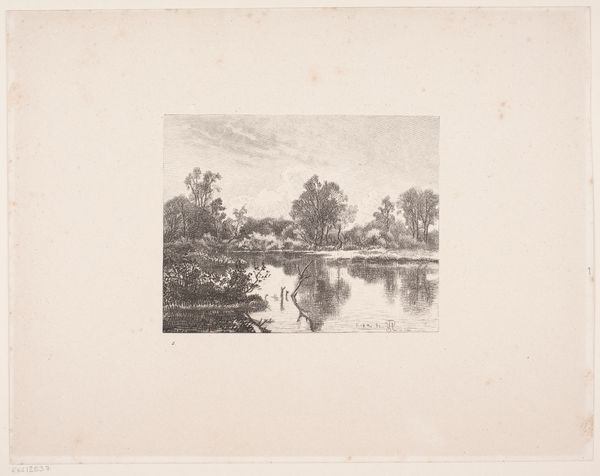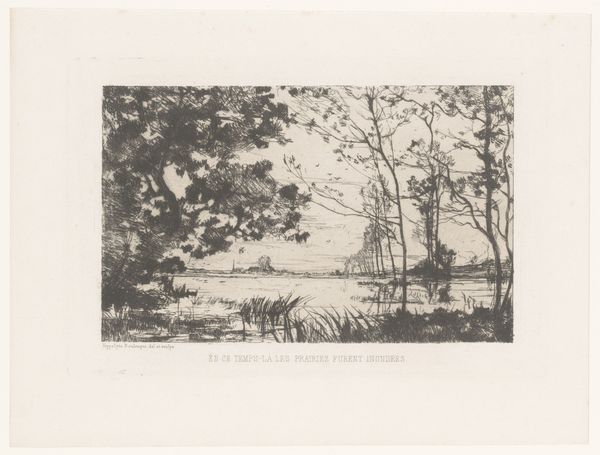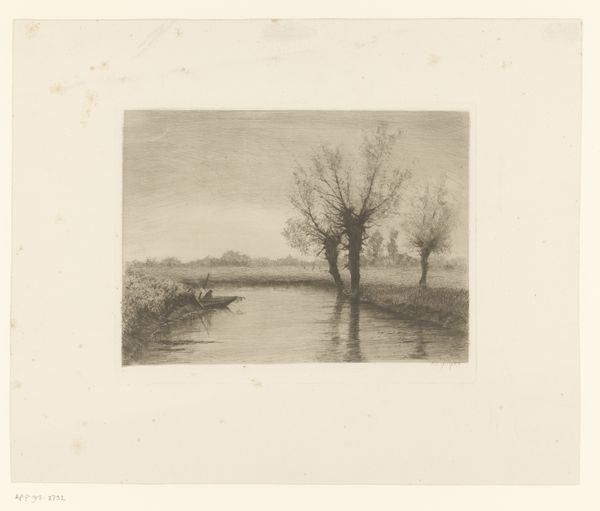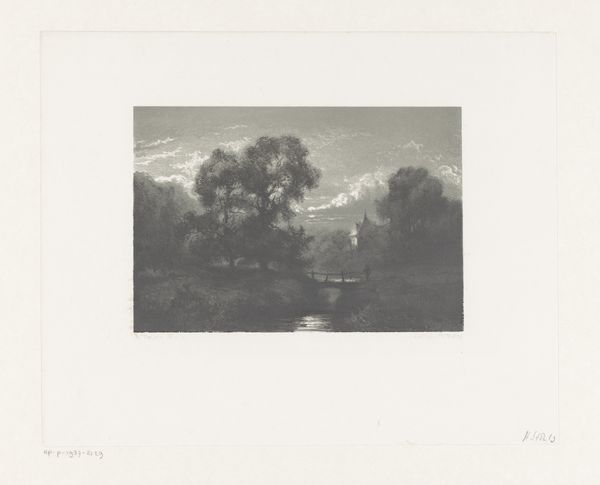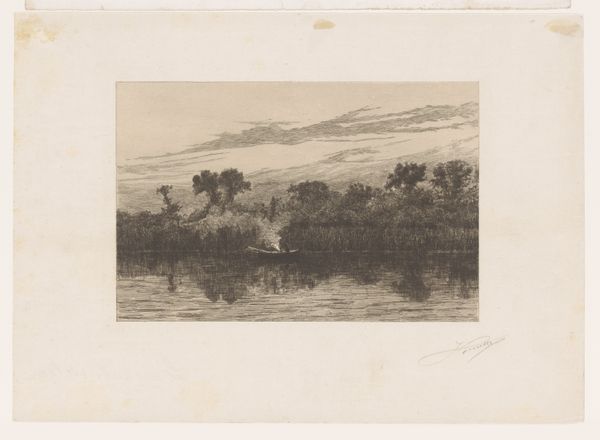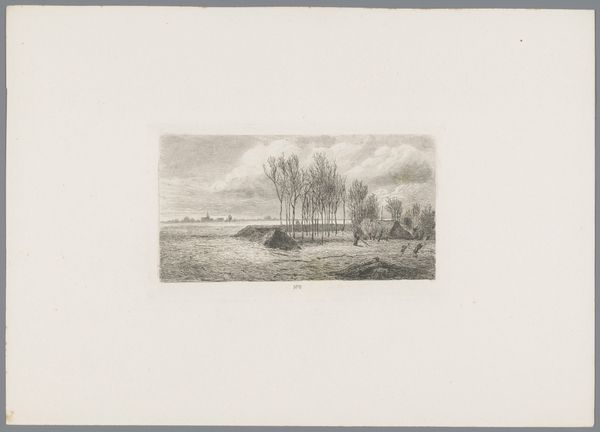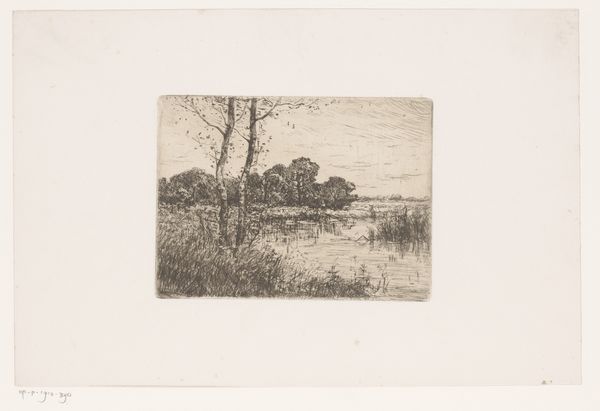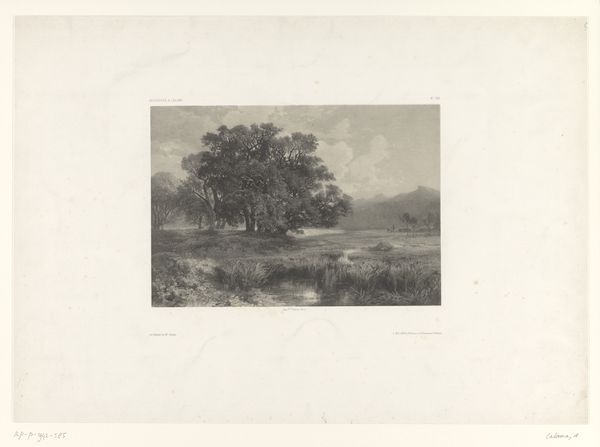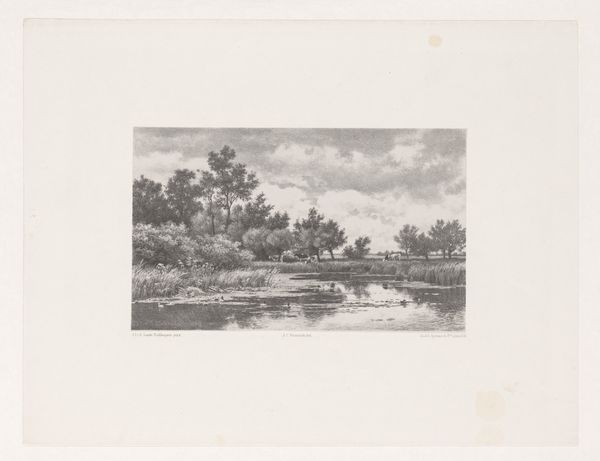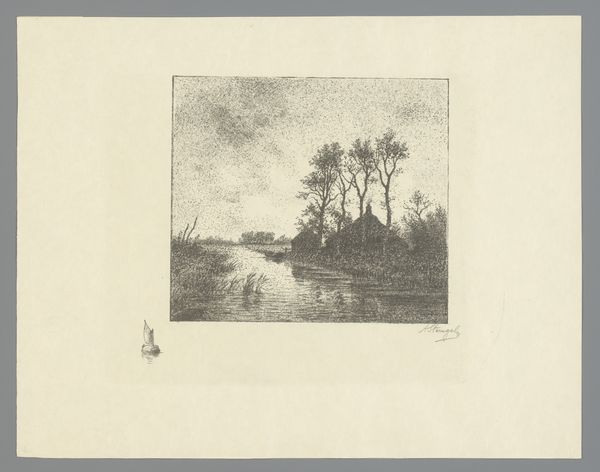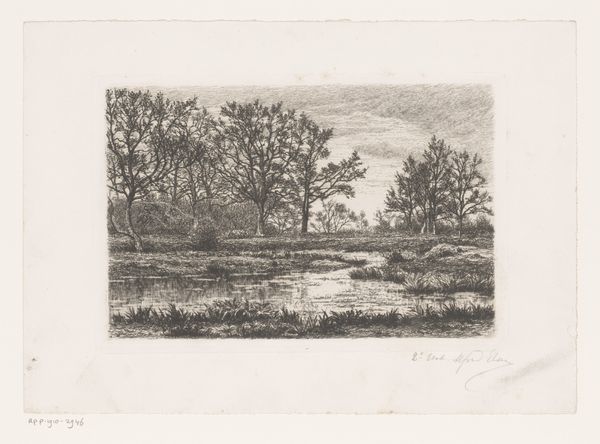
Dimensions: height 125 mm, width 187 mm
Copyright: Rijks Museum: Open Domain
Curator: Carl Bloch’s 1882 print, “Waterplas bij maanlicht,” captivates with its intricate linework and tonal gradations. The engraving depicts a tranquil waterscape under the subtle glow of the moon. Editor: It strikes me as melancholic. The stark contrasts in light, coupled with the desolate expanse of water, invoke a sense of isolation. Curator: Indeed, the work skillfully employs light to structure our perception. Notice how the horizontal lines create depth. The engraver contrasts the solidity of trees in the background and the delicate, ethereal quality of the reflected moonlight in the water, almost obscuring the horizon line and adding drama to the picture. Editor: The artist has centered the moon but minimized its visual weight; this pushes the horizon up and effectively turns the moon’s subtle glow into an imposing spotlight. As if we can only perceive things that it directly touches! What statement might the artist be trying to make? Is the engraving a reference to a society in conflict at the time? How is social or individual freedom constrained by our relationship to nature? Curator: Such speculations take us afield. Let us return to Bloch's formalism. He has skillfully manipulated the tools of engraving, exploiting line to generate texture. Note the clouds! With very little cross hatching and use of a limited palette, they generate visual tension at the top of the picture, making the composition pop. Editor: I cannot ignore that nature and representations of it always mirror specific contexts; nature in this sense can function as both inspiration for or constraint against progress depending on one’s individual circumstances. Still, there's much to consider regarding how such limited tonal range achieves such complex representation! Curator: Ultimately, “Waterplas bij maanlicht” presents us with a masterclass in controlled engraving; its aesthetic rests not in narrative flourish but in expert arrangement and skillful texture. Editor: Yes, in our efforts to decode symbols, perhaps we can be equally moved by appreciating form while understanding sociopolitical history. It offers a stark invitation to contemplation.
Comments
No comments
Be the first to comment and join the conversation on the ultimate creative platform.

